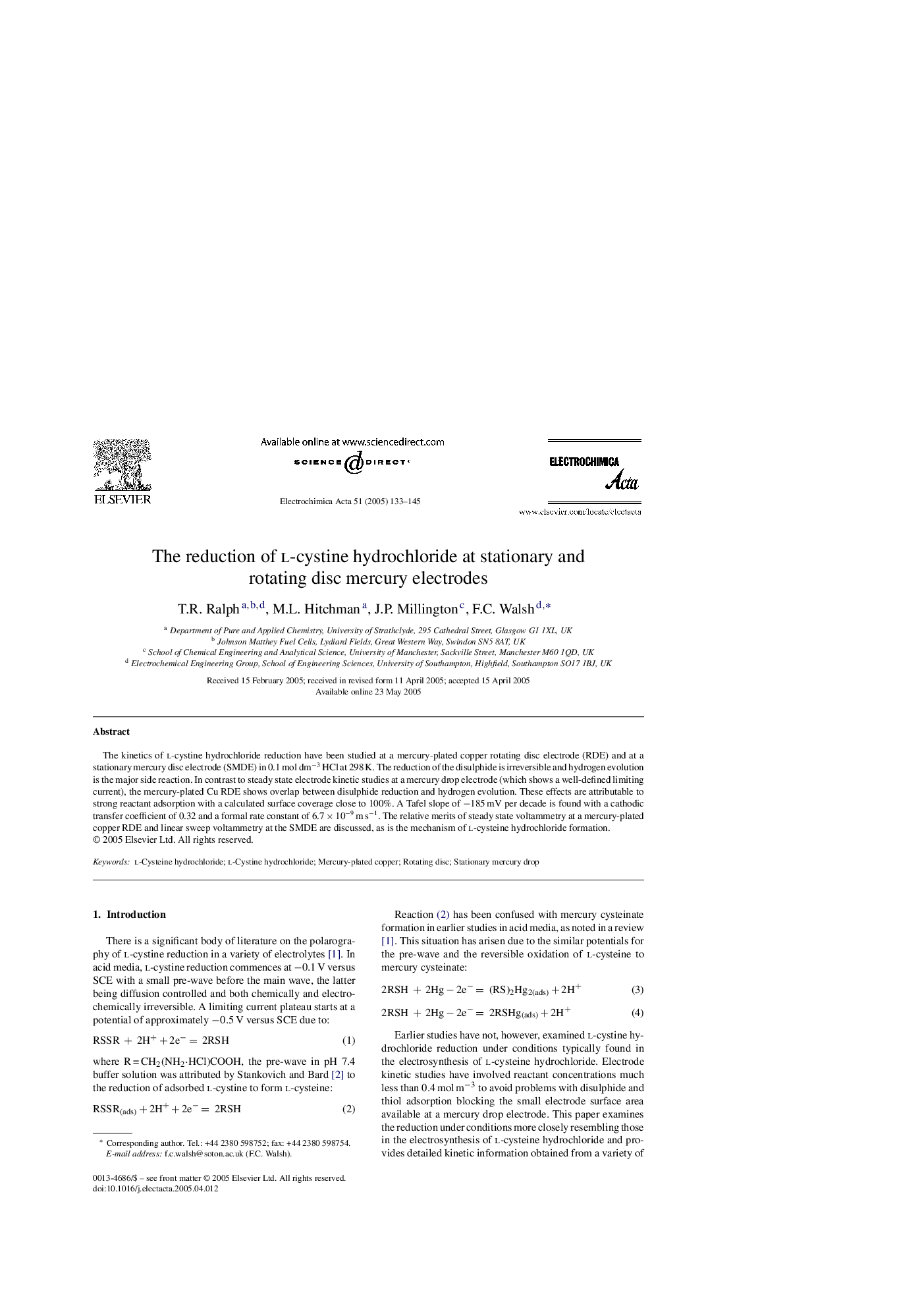| Article ID | Journal | Published Year | Pages | File Type |
|---|---|---|---|---|
| 10269319 | Electrochimica Acta | 2005 | 13 Pages |
Abstract
The kinetics of l-cystine hydrochloride reduction have been studied at a mercury-plated copper rotating disc electrode (RDE) and at a stationary mercury disc electrode (SMDE) in 0.1 mol dmâ3 HCl at 298 K. The reduction of the disulphide is irreversible and hydrogen evolution is the major side reaction. In contrast to steady state electrode kinetic studies at a mercury drop electrode (which shows a well-defined limiting current), the mercury-plated Cu RDE shows overlap between disulphide reduction and hydrogen evolution. These effects are attributable to strong reactant adsorption with a calculated surface coverage close to 100%. A Tafel slope of â185 mV per decade is found with a cathodic transfer coefficient of 0.32 and a formal rate constant of 6.7 Ã 10â9 m sâ1. The relative merits of steady state voltammetry at a mercury-plated copper RDE and linear sweep voltammetry at the SMDE are discussed, as is the mechanism of l-cysteine hydrochloride formation.
Related Topics
Physical Sciences and Engineering
Chemical Engineering
Chemical Engineering (General)
Authors
T.R. Ralph, M.L. Hitchman, J.P. Millington, F.C. Walsh,
